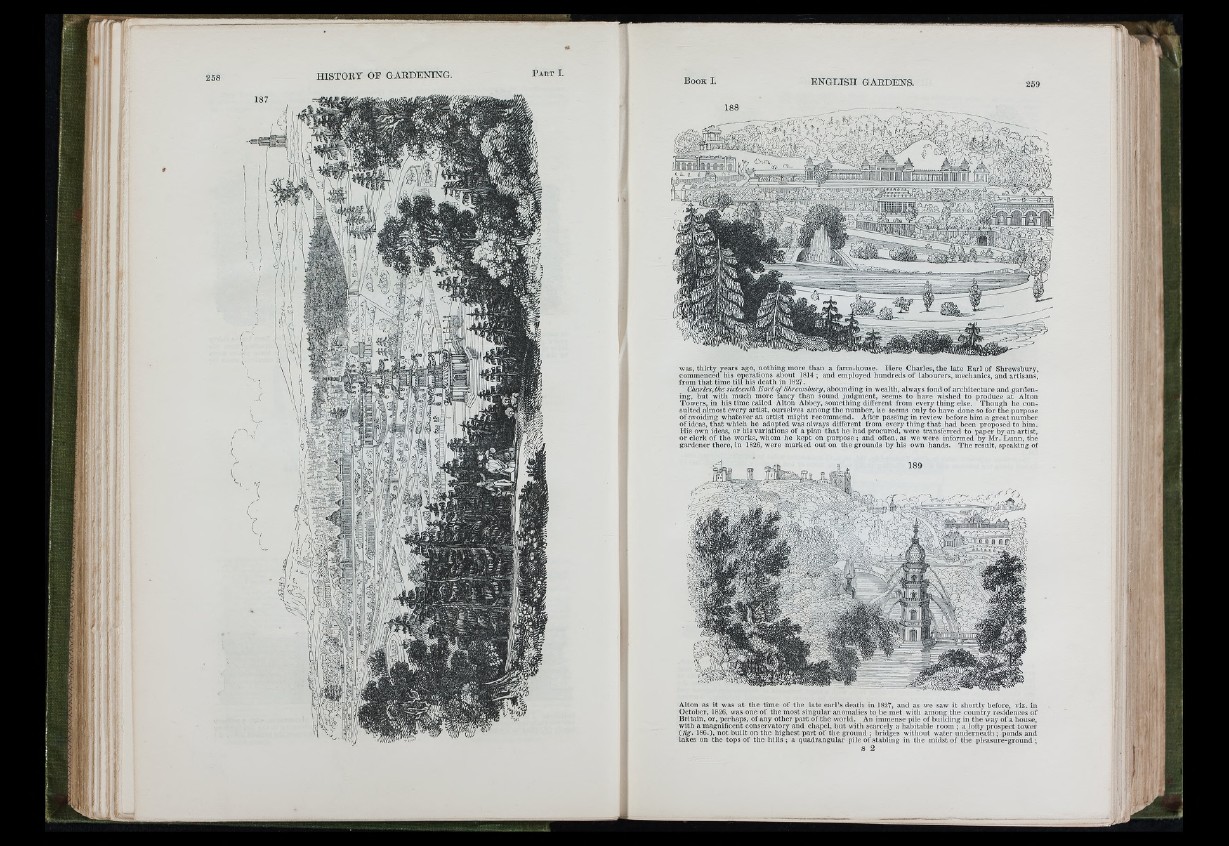
was, th irty years ago, nothing more than a farm-house. Here Charles, the late Earl of Shrewsbury,
commenced his operations about 1814 ; and employed hundreds of labourers, mechanics, and artisans
from th a t time till his death in 1827.
Charles,the sixteenth E a r lo f Shrewsbury, abounding in wealth, always fond of architecture and gardening,
b u t with much more fancy than sound judgment, seems to have wished to produce a t Alton
Towers, iu his time called Alton Abbey, something different from every thing else. Though he consulted
almost every artist, ourselves among th e number, he seems only to have done so for the purpose
o f avoiding whatever an artist might recommend. After passing in review before him a great number
of ideas, th a t which he adopted was always different from every thing that had been proposed to him.
His own ideas, or his variations of a plan that he had procured, were transferred to paper by an artist,
o r clerk of th e works, whom he kept on purpose ; and often, as we were informed by Mr. Lunn, the
gardener there, in 1826, were marked out on the grounds by his own hands. The result, speaking of
Alton as it was a t th e time of the late c a rl’s death in 1827, and as we saw it shortly before, viz. in
October, 1826, was one of th e most singular anomalies to be met with among the country residences of
Britain, or, perhaps, of any other part of th e world. An immense pile of building in the way of a house,
with a magnificent conservatory and chapel, but with scarcely a habitable room ; a lofty prospect tower
{fig. 186.), not built on the highest part of th e ground ; bridges without water underneath ; ponds and
lakes on the tops of the hills ; a quadrangular pile of stabling in the midst of th e pleasure-ground ;